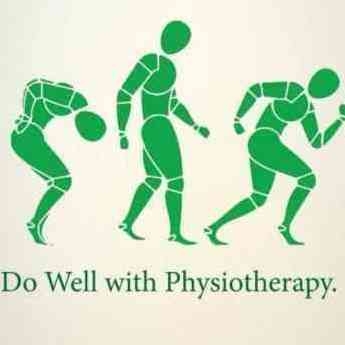+918042754929

This is your website preview.
Currently it only shows your basic business info. Start adding relevant business details such as description, images and products or services to gain your customers attention by using Boost 360 android app / iOS App / web portal.
Hallux valgus and rigidus? What is hallux valg...
Hallux valgus and rigidus? What is hallux valgus? It is the result of the medial deviation of the 1st metatarsophalangeal joint. How does it happen? According to research, it can be genetics. However, stop thinking of what we cant change but start thinking of what we can change. Any other reasons why it presents? - Yes. Look at their narrow toe box. It will squeeze your toes in. The first toe that is affected is the biggest one. Yes, your 1st toe. Since the toe box is too narrow. The great toe deviates medially. It also can cause microtrauma to the 1st MPJ. Afterwards, it starts deforming. What can happen afterwards? Yes, reduced 1st toe extension (or dorsiflexion). This can be a huge problem, not only for the foot and ankle but also for the other parts of the body. You need sufficient dorsiflexion of the 1st toe during push off. It needs to be done for effective load transfer through the lower limb to the lumbopelvic area. Otherwise, reduced hip extension can occur with lack of gluteal firing. This means that the lumbopelvic region can lose its force closure that is required for optimal load tranfer. What is force closure to the lumbopelvic complex? It is the support of myofascial system. All the muscles including deep core system surrounds the complex, giving it stable compression. If there is reduced force closure, your SIJ is more likley to fail load transfer. Yes. Clearly, you need to understand how this load transfer works from bottom to top and vice versa. Dont forget the foot. It doesnt matter how much you manually treat the deviated toe. The root of the problem can be numerous. But the common one is your shoes with narrow toe boxes. Change them to wide ones or walk bearfoot. Why bearfoot? Better than wearing shoes? It depends but i highly recommend walking bearfoot for a number of reasons. 1. Runners have slight heels, about 2 or 3 cm. It is the way it is. Its been thought to work as a shock absorber. However, research doesnt support this. Whats a matter with this? This heel can limit your dorsiflexion during heel strike. You need a heel contact with good dorsiflexion for shock absorption. 2. They have rigid medial and lateral arch supports. What does it mean? they can prevent your natural foot pronation and supination. Plus, due to thoes rigid support, your intrinsic foot muscles can be atrophied. Cuz you know that you use it or lose it right? These intrinsic muscles are very important as the deep core system. They are tonic muscles to stabilise your foot prior to weight bearing. 3. Have a look at your toe box now. I mean NOW! Yes it is narrow. But what else? Yes it is slightly elevated. What is a problem with that? With this elevation, your plantar fascia is constantly under tension, meaning that it is stretched until you take off your shoes. Yes you are overloading your plantar fascia which can lead to plantar fasciitis. 4. Walking bearfoot is not hygienic? Look. Are your feet dirtier than your shoes? Once you take off your shoes, your feet are finally getting some air and can be washed after work. You feel great without shoes. What about your shoes? Do you even wash them? How often? Once a year? Anyways, What is hallux rigidus? It is slightly different to hallux valgus. It is more 1st MPJ degeneration with dorsal bunion. However, it is caused by similar causing factors of hallux valgus. So what do you have to do? - assess the 1st toe - think of what it happens - change your shoes - strengthen intrinsic muscles - walk bearfoot as much as possible - have a look at your glutes as they are connected to your foot. - gain 1st toe extension (dorsiflexion) - stretch your toe extensors as they are constanly under contraction from the elevated toe box.

